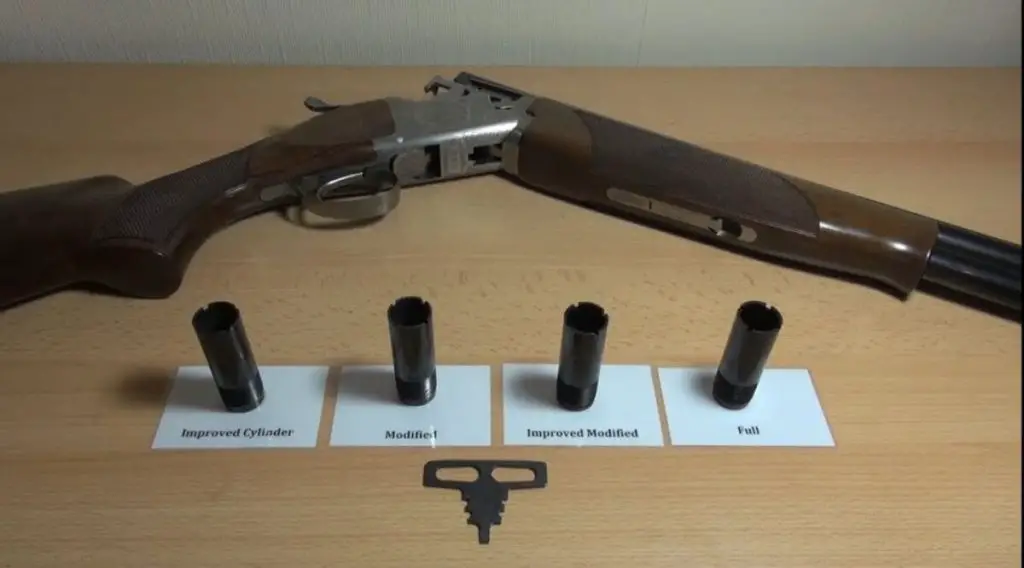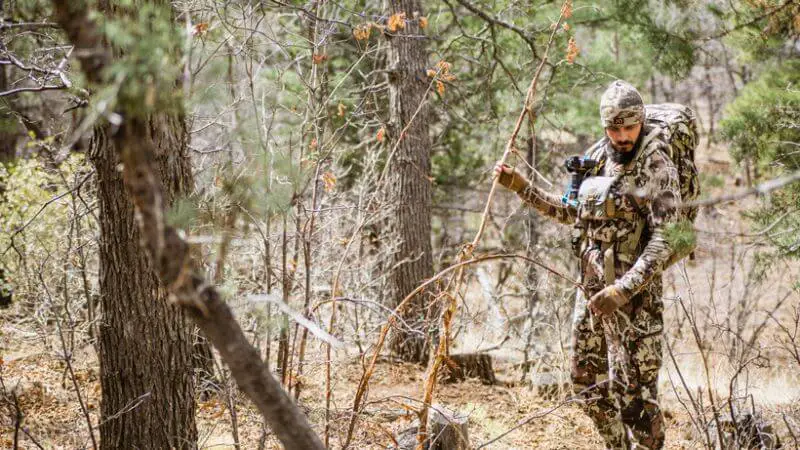When it comes to varmint hunting and small game shooting, the choice of caliber can mean the difference between a successful day in the field and a disappointing one. Enter the .17 Hornet and the .22 Hornet – two cartridges that belong to the elite group of Hornet rounds. Don’t let their names fool you though, these two calibers may share a similar title, but they’re far from identical twins. Each one has its own unique characteristics that make them a force to be reckoned with in their own right.
The .17 Hornet is a true speed demon, designed for lightning-fast velocity and long-range accuracy. With a bullet diameter of .172 inches, it’s smaller than its counterpart, but it packs a punch that belies its diminutive size. The .22 Hornet, on the other hand, is a bit more of a jack-of-all-trades, offering a balance of speed and power that can take down everything from small game to varmints. With a slightly larger bullet diameter of .224 inches, it’s got a little extra oomph behind each shot.
In this comparison, we will take a closer look at the .17 Hornet and the .22 Hornet, examining their histories, specifications, and performance characteristics to determine which one might be the better choice for your specific shooting needs.
.17 Hornet vs .22 Hornet: Detailed Comparison
In this comparison, we’ll take a closer look at the .17 Hornet and .22 Hornet, comparing their features, performance, and suitability for different hunting situations.
History and Design
The .22 Hornet was introduced by Winchester in 1930 as a small, low-recoil cartridge for varmint hunting. It is based on the .22 WCF (Winchester Centerfire) case, shortened and necked down to accept a .224-inch bullet. The cartridge uses a relatively small powder charge and has a maximum effective range of around 250 yards.
The .17 Hornet is a newer cartridge, introduced by Hornady in 2012. It is based on the .22 Hornet case, necked down to accept a .172-inch bullet. Like the .22 Hornet, the .17 Hornet uses a small powder charge and has a low recoil, making it ideal for varmint hunting and pest control. However, the .17 Hornet is faster and flatter-shooting than the .22 Hornet, with a maximum effective range of around 300 yards.
Velocity and Performance
When it comes to velocity and performance, the .17 Hornet and .22 Hornet are quite different. The .22 Hornet fires a heavier bullet at a slower velocity than the .17 Hornet. For example, a typical .22 Hornet load might use a 45-grain bullet at a velocity of around 2,500 feet per second (fps), while a typical .17 Hornet load might use a 20-grain bullet at a velocity of around 3,800 fps.
In terms of accuracy, both cartridges are known for their precision. The .17 Hornet’s small bullet size and high velocity make it particularly accurate at long ranges, while the .22 Hornet’s heavier bullet is better suited for close-range shots.
Recoil Comparison Table for .17 Hornet vs .22 Hornet
| Cartridge | Bullet Weight (grains) | Muzzle Velocity (fps) | Recoil Energy (ft-lbs) | Recoil Velocity (fps) | Felt Recoil Force (lbf) |
|---|---|---|---|---|---|
| .17 Hornet | 20 | 3,800 | 1.6 | 6.2 | 1.6 |
| .22 Hornet | 45 | 2,500 | 3.3 | 8.6 | 2.1 |
- Bullet Weight (grains): This refers to the weight of the bullet in grains (a unit of mass used in the firearms industry).
- Muzzle Velocity (fps): This refers to the speed at which the bullet leaves the muzzle of the rifle, measured in feet per second (fps).
- Recoil Energy (ft-lbs): This refers to the amount of energy transferred to the shooter’s body when firing the rifle, measured in foot-pounds (ft-lbs).
- Recoil Velocity (fps): This refers to the speed at which the rifle moves backward (or forward) in response to the recoil energy, measured in feet per second (fps).
- Felt Recoil Force (lbf): This is a measure of the actual force felt by the shooter when firing the rifle, taking into account the recoil energy, velocity, and the weight of the rifle.
Energy Comparison Table for .17 Hornet vs .22 Hornet
| Cartridge | Bullet Weight (grains) | Muzzle Velocity (fps) | Muzzle Energy (ft-lbs) | Energy at 200 yards (ft-lbs) | Energy at 300 yards (ft-lbs) |
|---|---|---|---|---|---|
| .17 Hornet | 20 | 3,800 | 672 | 304 | 136 |
| .22 Hornet | 45 | 2,500 | 703 | 349 | 186 |
- Muzzle Energy (ft-lbs): This refers to the amount of energy the bullet has when it leaves the muzzle of the rifle, measured in foot-pounds (ft-lbs).
- Energy at 200/300 yards: This refers to the amount of energy the bullet
Suitability for Hunting
The .17 Hornet and .22 Hornet are both popular choices for pest control. However, their different ballistics and performance characteristics make them better suited for different hunting situations.
The .17 Hornet is best suited for small varmints such as prairie dogs, ground squirrels, and rabbits. Its flat trajectory and high velocity make it ideal for long-range shots, especially in windy conditions. However, the .17 Hornet is not well-suited for larger varmints such as coyotes, which require a heavier bullet for adequate penetration.
The .22 Hornet, on the other hand, is better suited for larger varmints and predators such as coyotes and foxes. Its heavier bullet delivers more energy and has better penetration, making it more effective at taking down larger animals. The .22 Hornet is also well-suited for close-range shots, making it a good choice for hunting in thick brush or wooded areas.
Trajectory: 17 Hornet vs 22 Hornet
When it comes to the trajectory of a bullet, “flatter shooting” refers to a cartridge’s ability to maintain a relatively flat trajectory over distance. This is important for long-range shooting, as a flatter trajectory reduces the need for holdover or windage adjustments.
Between the .17 Hornet and .22 Hornet, the .17 Hornet is generally considered to shoot flatter. This is due to the combination of its higher muzzle velocity and lighter bullet weight. A typical .17 Hornet load fires a 20-grain bullet at a velocity of around 3,800 fps, while a typical .22 Hornet load fires a 45-grain bullet at a velocity of around 2,500 fps. The higher velocity of the .17 Hornet helps to reduce the effect of gravity on the bullet over long distances, resulting in a flatter trajectory.
For example, let’s compare two cartridges fired from rifles with similar barrel lengths and zeroed at 100 yards. Using Hornady’s online ballistic calculator, we can see that a .17 Hornet load firing a 20-grain V-MAX bullet at 3,800 fps will drop 6.6 inches at 200 yards, while a .22 Hornet load firing a 45-grain V-MAX bullet at 2,500 fps will drop 11.9 inches at 200 yards. At 300 yards, the .17 Hornet load will drop 26.4 inches, while the .22 Hornet load will drop 40.3 inches. This demonstrates the flatter trajectory of the .17 Hornet, which drops less than half as much as the .22 Hornet at 300 yards.
It’s worth noting, however, that the actual trajectory of a bullet can be affected by a variety of factors, including atmospheric conditions, bullet design, and rifle accuracy. Different loads within the same cartridge can also produce different trajectories. Therefore, it’s important to test your specific rifle and load combination to determine its true trajectory at different ranges.
Ballistic Data Comparison Table for .17 Hornet vs .22 Hornet
| Cartridge | Bullet Weight (grains) | Muzzle Velocity (fps) | Ballistic Coefficient | Trajectory at 200 yards (inches) | Trajectory at 300 yards (inches) |
|---|---|---|---|---|---|
| .17 Hornet | 20 | 3,800 | 0.185 | 6.6 | 26.4 |
| .22 Hornet | 45 | 2,500 | 0.226 | 11.9 | 40.3 |
- Ballistic Coefficient: This is a measure of the bullet’s ability to maintain velocity and overcome air resistance, with higher numbers indicating better performance.
- Trajectory at 200/300 yards: This refers to the amount of drop (in inches) the bullet experiences at the respective distances when fired from a rifle zeroed at 100 yards.
Frequently Asked Questions about 17 Hornet vs 22 Hornet
The .17 Hornet is a popular cartridge for varmint hunting and target shooting due to its high velocity and flat trajectory. It is particularly effective for smaller varmints such as ground squirrels, prairie dogs, and rabbits, where its high velocity and low recoil make it a good choice for shooting at longer ranges.
The .17 Hornet is also a popular choice for small game hunting, such as raccoons and foxes, but it is not recommended for larger game such as deer or elk. Additionally, the .17 Hornet can be a good choice for long-range target shooting, where its high velocity and flat trajectory can be advantageous. Overall, the .17 Hornet is a versatile cartridge that is well-suited for a variety of hunting and shooting applications.
The .22 Hornet is a versatile cartridge that is well-suited for a variety of hunting and shooting applications. It is suitable for hunting larger game such as coyotes, foxes, and raccoons at closer ranges. Its flat trajectory and moderate power also make it a good choice for target shooting and plinking.
In addition, the .22 Hornet is a popular cartridge for handgun hunting, where its relatively low recoil and high accuracy make it a good choice for shooting at small game.
The .17 Hornet is a necked-down version of the .22 Hornet cartridge. The .22 Hornet was developed by Winchester in the 1930s as a small, centerfire cartridge for varmint and small game hunting. It quickly gained popularity due to its low recoil and accuracy, and it remains a popular choice today.
In 2012, Hornady introduced the .17 Hornet, which is based on the .22 Hornet case, but with a smaller bullet diameter of 0.172 inches. The .17 Hornet offers several advantages over the .22 Hornet, including higher velocities, flatter trajectories, and less recoil.
When it comes to hunting coyotes, both the .17 Hornet and .22 Hornet cartridges can be effective, but the .22 Hornet is generally considered to be the better choice. This is because the .22 Hornet is a larger and more powerful cartridge, which can deliver more energy and greater knockdown power. This can be particularly important when hunting larger animals like coyotes, which can be tough to bring down with a smaller cartridge.
Resources
https://www.americanrifleman.org/content/the-22-hornet-history-performance/
https://www.americanhunter.org/content/behind-the-bullet-17-hornet/
- How to Put a Scope on a Mosin Infantry in Tarkov: A Quick Guide - November 7, 2024
- How to Edit a Scope Box in Revit: A Step-by-Step Guide - November 6, 2024
- How to Put a Scope on Mosin Tarkov: Expert Tips for Gamers - November 6, 2024

